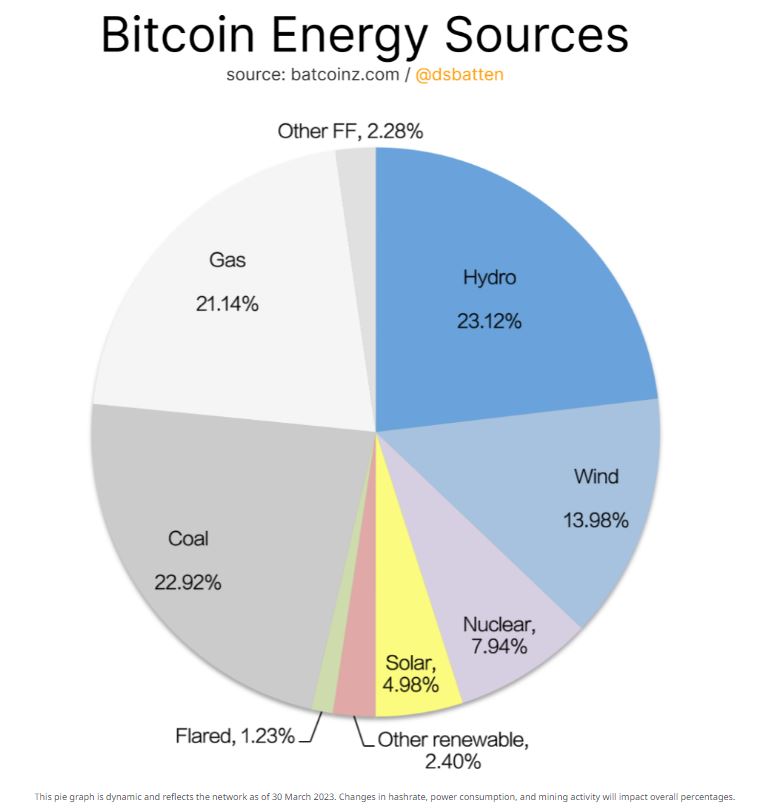
When off-grid Bitcoin mining is factored in, the major energy source for the industry is hydropower, providing electricity for 23% of all bitcoin mining, according to the Batcoinz website.
Previously, the Cambridge Centre for Alternative Finance postulated that the major energy source used by the Bitcoin network was coal, the website said. However, that conclusion was based on a dataset that did not include off-grid mining.
According to the website, 15.8% of the power used by on-grid mining is hydro, but more than half of all sustainable off-grid mining is hydro-powered. Factoring this in, the major energy source is hydro at 23%.
Sustainable mining companies such as OceanFalls, Blockfusion, Hut8, Iris, Sato, Terawulf, Statar/Lake Parime, Gridshare and HPG are just some of the companies that are either 100% powered by hydro or majority hydro powered.
Hydro Review reported in January 2023 that Sazmining’s next mining facility, a 1.4 MW hydropower plant in Wisconsin, was nearly ready to go live. Sazmining said this facility provides space for 350 bitcoin mining rigs, with 90% of those already reserved by waitlist customers.
The next highest sustainable energy source is wind, representing almost 14% of all Bitcoin mining power. The high proportion of wind energy on the ERCOT grid, where almost a quarter of the Bitcoin mining network are now located, is another factor for the strong showing from wind.
Batcoinz said that Bitcoin is a fully electrified technology with zero direct emissions. Emissions arise from using electricity that is generated using in part fossil fuels. Bitcoin mining is not 100% tethered to the grid, so its energy source and emissions may vary from the grid mix of that country.
The BEEST model suggests that the sustainable composition of the Bitcoin network is increasing at 6.2% per year. If sustainable energy growth continues to trend upwards, this is likely to cause the relative percentages of coal, gas and other fossil fuel sources to decline.